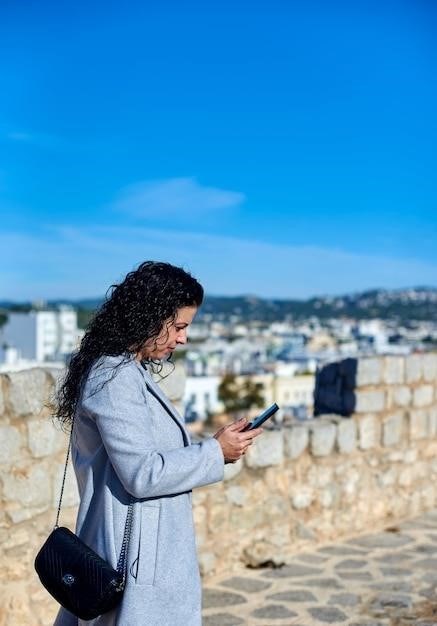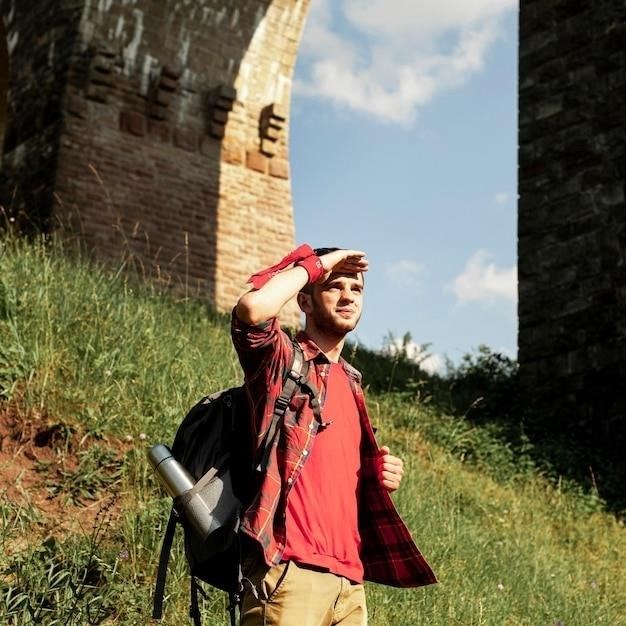Lebanon Travel Guide
This Lebanon travel guide aims to help you make the most of your trip, providing tips, itinerary ideas, and insights into what makes Lebanon unique. Whether you’re exploring the bustling streets of Beirut, hiking in the Cedars of God, or marveling at the ancient ruins of Baalbek, Lebanon promises an unforgettable travel experience.

Introduction
Lebanon, a small yet culturally diverse country in the Middle East, beckons travelers with its rich history, stunning landscapes, and vibrant culture. From the bustling streets of Beirut to the ancient ruins of Baalbek, Lebanon offers a unique blend of modernity and tradition. This travel guide will provide you with essential information to plan your trip, including the best time to visit, getting around, accommodation options, and must-see attractions. We’ll also explore the vibrant city of Beirut, its neighborhoods, and the exciting day trips you can take from the capital. Prepare to be captivated by the beauty and charm of Lebanon, a country that has much to offer travelers seeking an authentic and unforgettable experience.
Best Time to Visit
The best time to visit Lebanon depends on your interests and preferences. For warm weather and beach activities, the summer months (June to August) are ideal, with temperatures reaching the high 20s to low 30s Celsius. However, this period also coincides with peak tourist season, so expect higher prices and larger crowds. Spring (March to May) and autumn (September to November) offer pleasant temperatures, fewer crowds, and opportunities for hiking and exploring the countryside. Winter (December to February) brings cooler temperatures and rain, but it’s still a good time to enjoy the snow-capped mountains and visit historical sites without the summer crowds. Keep in mind that Lebanon can experience political and economic instability, so it’s always advisable to check the latest travel advisories before planning your trip.
Getting Around
Getting around Lebanon is relatively easy, with a variety of transportation options available. For long-distance travel, buses are the most common and affordable choice. Several bus companies operate routes between major cities and towns, offering comfortable and reliable service. Taxis are readily available in urban areas, but be sure to agree on a price before starting your journey. If you’re looking for a more adventurous experience, renting a car allows you to explore Lebanon at your own pace and discover hidden gems off the beaten path. However, be aware that driving conditions can be challenging, especially in mountainous areas, and traffic congestion is common in Beirut. Public transportation within Beirut is limited, but the city’s compact size makes walking and using ride-hailing services like Uber and Careem convenient options.
Accommodation
Lebanon offers a diverse range of accommodation options to suit every budget and preference. From luxurious hotels in Beirut to charming guesthouses in smaller towns, you’ll find comfortable and welcoming places to stay. In Beirut, you can choose from modern high-rise hotels with stunning city views or boutique hotels with a more intimate atmosphere. For budget-conscious travelers, hostels and guesthouses are available, providing a social and affordable option. In rural areas, traditional Lebanese guesthouses offer a unique cultural experience, allowing you to immerse yourself in local life. Regardless of your choice, be sure to book in advance, especially during peak season, to ensure availability and secure the best deals.

Things to Do in Beirut
Beirut, Lebanon’s vibrant capital, offers a captivating blend of ancient history, modern culture, and bustling nightlife; Explore the iconic Raouche Rocks, towering limestone formations jutting out into the Mediterranean Sea, and witness breathtaking sunsets. Immerse yourself in the lively Beirut Souks, a labyrinth of shops, restaurants, and cafes, where you can find everything from traditional crafts to designer fashion. Wander through the city’s diverse neighborhoods, each with its own unique character, from the bohemian Hamra to the chic Zaytuna Bay. Discover the rich history at the National Museum of Beirut, home to a vast collection of artifacts spanning millennia. Beirut offers a vibrant nightlife scene, with a wide selection of bars, clubs, and live music venues, making it a city that truly comes alive at night.
Raouche Rocks
The Raouche Rocks, also known as the Pigeon Rocks, are a must-see landmark in Beirut. These towering limestone formations, jutting out into the Mediterranean Sea, offer breathtaking views and a sense of natural wonder. The rocks are a popular spot for sunset viewing, with the golden hues reflecting off the water creating a truly magical experience. Take a stroll along the Corniche, the scenic coastal promenade, to admire the rocks from afar or venture closer to the rocks for a more intimate view. The Raouche Rocks are a symbol of Beirut’s beauty and resilience, a testament to the city’s enduring spirit.
Beirut Souks
The Beirut Souks, a vibrant labyrinth of shops and stalls, offer a sensory feast for visitors. Explore the bustling alleyways, adorned with traditional architecture, and discover a treasure trove of local crafts, souvenirs, and delicacies. The Souks are a melting pot of cultures and a testament to Beirut’s rich history. Browse through the stalls showcasing handcrafted jewelry, intricate textiles, and aromatic spices. Indulge in a traditional Lebanese coffee or savor the flavors of local street food. Be sure to visit the iconic clock tower in Place de l’Etoile, a symbol of Beirut’s resilience, and the Roman Baths, a reminder of the city’s ancient past. The Beirut Souks are a must-visit for anyone seeking an authentic Lebanese experience.
Neighborhoods
Beirut is a city of diverse neighborhoods, each with its own unique charm and character. Hamra, known for its lively atmosphere, is a melting pot of cultures, with trendy boutiques, cafes, and restaurants. Gemayze and Mar Mikhael, the heart of Beirut’s nightlife, offer a vibrant array of bars and clubs. Zaytuna Bay, a more upscale area, boasts luxurious hotels and waterfront dining. Wander through these neighborhoods and experience the true pulse of Beirut. Explore the historic streets, discover hidden gems, and immerse yourself in the city’s vibrant culture. From the bustling markets to the quiet cafes, each neighborhood offers a glimpse into the diverse tapestry of Beirut.
Day Trips from Beirut
Lebanon is a compact country, making it easy to explore beyond Beirut on day trips. From ancient ruins to stunning natural landscapes, there’s something for everyone. Explore the Jeita Grottoes, a network of breathtaking caves, or visit Byblos, a charming coastal town with a rich history. Venture further north to Batroun, known for its picturesque old town and the spectacular Mseilha Fort. For a dose of history and grandeur, head to Baalbek, home to impressive Roman ruins. South of Beirut, discover Saida, with its vibrant souk and the impressive seafort. Escape the city’s bustle and explore the beauty and history that Lebanon has to offer.
Jeita Grottoes
The Jeita Grottoes, located north of Beirut, are a must-see natural wonder. This impressive cave system features two interconnected caves⁚ the Upper Grotto, accessible by foot, and the Lower Grotto, explored by boat. The Upper Grotto boasts stunning stalactite and stalagmite formations, while the Lower Grotto is known for its breathtaking underground lake. Be sure to leave your phone in a locker at the entrance as photography is not permitted. The Jeita Grottoes are a captivating experience, offering a glimpse into the beauty of Lebanon’s natural wonders.
Byblos
Byblos is a charming coastal town with a rich history, boasting ancient ruins and a picturesque harbor. Wander through the historic center, admiring the Mediterranean architecture and vibrant flower displays. Explore the ancient citadel, a testament to Byblos’s long past. For a unique experience, climb the ancient tower at the harbor entrance for breathtaking sunset views. If you prefer the beach, head north of the harbor to a pebble beach perfect for swimming during the summer months. Byblos is also home to Fenicia restaurant, widely considered one of the best restaurants in Lebanon.
Batroun
Batroun is a delightful seaside town in northern Lebanon. Spend an afternoon exploring its old town, reminiscent of Byblos but with a less touristy feel. Just outside Batroun, discover the impressive Mseilha Fort, a hidden gem off the beaten path. While Batroun itself is a pleasant destination, its proximity to other attractions makes it a perfect base for exploring the surrounding area. Consider venturing further north to discover the unique charm of Tripoli, with its bustling souk, historic citadel, and picturesque Al Mina district. Or, escape to the serene Palm Island, offering the largest sandy beach in northern Lebanon, ideal for a relaxing day by the sea.
Baalbek
Baalbek is home to some of the most impressive Roman ruins in the world, particularly the colossal Temple of Bacchus, dedicated to the god of wine. Before you arrive, consider a visit to Anjar, a beautiful and historic site that will provide a sense of scale for the grandeur of Baalbek. While Baalbek city itself is generally safe, be cautious when venturing outside the city limits, as certain areas are known for their insecurity. Don’t miss the opportunity to try the local delicacy, sfeeha, a delicious pastry typically enjoyed in this region. Beyond the ancient ruins, Baalbek is also home to the Sayyida Khawla shrine, a beautiful and historic Shia shrine, believed by some to hold the tomb of Khawla, the daughter of Imam al-Husayn.
Saida
Saida boasts one of the most captivating souks in all of Lebanon, a labyrinth of ancient stone archways teeming with local vendors selling traditional wares and delectable Arab sweets. While in Saida, be sure to visit the Dabane Palace Museum, the Soap Museum, and the Hammam el-Sheikh traditional bathhouse. The imposing seafort on the waterfront is a sight to behold, although its interior is less impressive. For a refreshing beverage, head to Resthouse, a restaurant next to the seafort that is the only establishment in Saida permitted to serve alcohol. Its garden offers a picturesque setting to capture photographs of the seafort. Mleeta, a quaint village nestled in the mountains above Saida, is home to the well-preserved Hezbollah Museum, offering a comprehensive account of Lebanon’s wars with Israel and Hezbollah’s role in protecting the nation.
Mleeta
Mleeta, a charming village nestled in the mountains, houses one of Lebanon’s most meticulously preserved museums⁚ The Hezbollah Museum. Here, a knowledgeable English-speaking guide will lead you through the museum, recounting the various wars against Israel and Hezbollah’s crucial role in defending and liberating the nation. Regardless of your political leanings, the museum’s well-crafted exhibits make it a worthwhile destination. Located approximately a 40-minute drive up into the mountains above Saida, the museum offers a unique perspective on Lebanon’s history and its ongoing conflicts.
Tyre
Tyre, one of the oldest cities in the world, boasts a rich history dating back to Phoenician times. Explore the ancient Roman ruins, including the Hippodrome and the necropolis, and marvel at the well-preserved Roman baths. Take a stroll along the picturesque Tyre Corniche, offering stunning views of the Mediterranean Sea. For a taste of local life, wander through the bustling Tyre souk, a vibrant marketplace filled with traditional crafts and delicious Lebanese delicacies. While Tyre may not be as grand as some of Lebanon’s other historic sites, it offers a unique glimpse into the country’s ancient past and the enduring legacy of its Phoenician heritage.
